How to Pass the Saville Assessment in 2025
Updated May 31, 2024
A List of Saville Assessments Available for Practice in 2025
What Is the Saville Assessment?
The Saville assessment is the name given to a combination of several psychometric tests designed to be used in pre-employment screening and to assess employees already in-role for promotions and training needs.
Saville Assessments (formerly known as Saville Consulting) was created by Peter Saville, who was one of the co-founders of SHL.
As an international assessment publisher, Saville aptitude tests are used in the application process of employers in a wide range of industries, including:
- Camelot
- Ernst and Young
- EasyJet
- Fujitsu
- Prudential
- Jaguar/Land Rover
- Nestle
- Virgin Media
If you are going to complete a Saville assessment, you will be sent a link to the OASys platform to complete it at home and in your own time after you have applied for a position.
Like other psychometric assessments, these assessments are used to test candidates on their aptitudes, personality traits and work behaviors to ensure that they have the required inherent skills to be successful.
The type of Saville assessment that you will take depends on the senority of the role you are taking.
Some employers have bespoke assessments based on their individual needs, but most use a combination of assessments that assess the specific aptitudes that are necessary for the role.
Practice the Saville Assessment Test with TestHQ
What Are the Different Types of Saville Assessments?
Saville Swift Assessments
The Saville Swift Assessments are generally used in combination depending on the type of job that is advertised. This is known as a blended assessment.
They are designed to be much shorter than standalone assessments.
When used in combination, the entire duration of the assessment is less than 30 minutes, with each lasting between 90 seconds six minutes.
Analysis Aptitude Range
The Swift Assessments for the analysis range are aimed at professionals, graduates and professionals, including technicians.
In this range, the blended assessments include numerical aptitude, verbal aptitude and diagrammatic aptitude.
Comprehension Aptitude Range
The comprehension range is aimed at lower-level roles like commercial, administration, customer service and operational staff.
The assessments in this range are typically numerical aptitude, verbal aptitude and error checking.
Technical Aptitude Range
Aimed at production staff, the technical range includes assessments of spatial, mechanical and diagrammatic reasoning.
Apprentice Aptitude Range
The apprentice aptitude range is the most comprehensive, with verbal comprehension, numerical reasoning tests, diagrammatic, error checking, mechanical and spatial aptitude assessments.
It is most commonly used in entry-level positions, such as for apprenticeship candidates.
Executive Aptitude Range
The Swift executive aptitude test is aimed at managers, directors and professionals, and includes assessments on verbal analysis, numerical analysis, diagrammatic and abstract aptitudes.
Saville Single Assessments
The Saville Single Assessments are the full-length versions of the Swift Assessments, with the same structure as each part of the blended tests.
Each standalone assessment has a time limit of fewer than 30 minutes, and they can still be used in combination.
Every Saville assessment is built to be relevant to the job role that you have applied for. Therefore, if it’s a banking job, you will be dealing with economic questions.
Saville Assessment Numerical Aptitude Test
In the Saville Assessment numerical aptitude test, you will have 24 minutes to answer questions that test your numerical reasoning; in other words, your ability to analyze and interpret data presented as graphs, tables and statistics.
Each question is based on the data provided, and there are multiple-choice answers for you to pick from.
Practice the Saville Assessment with TestHQ
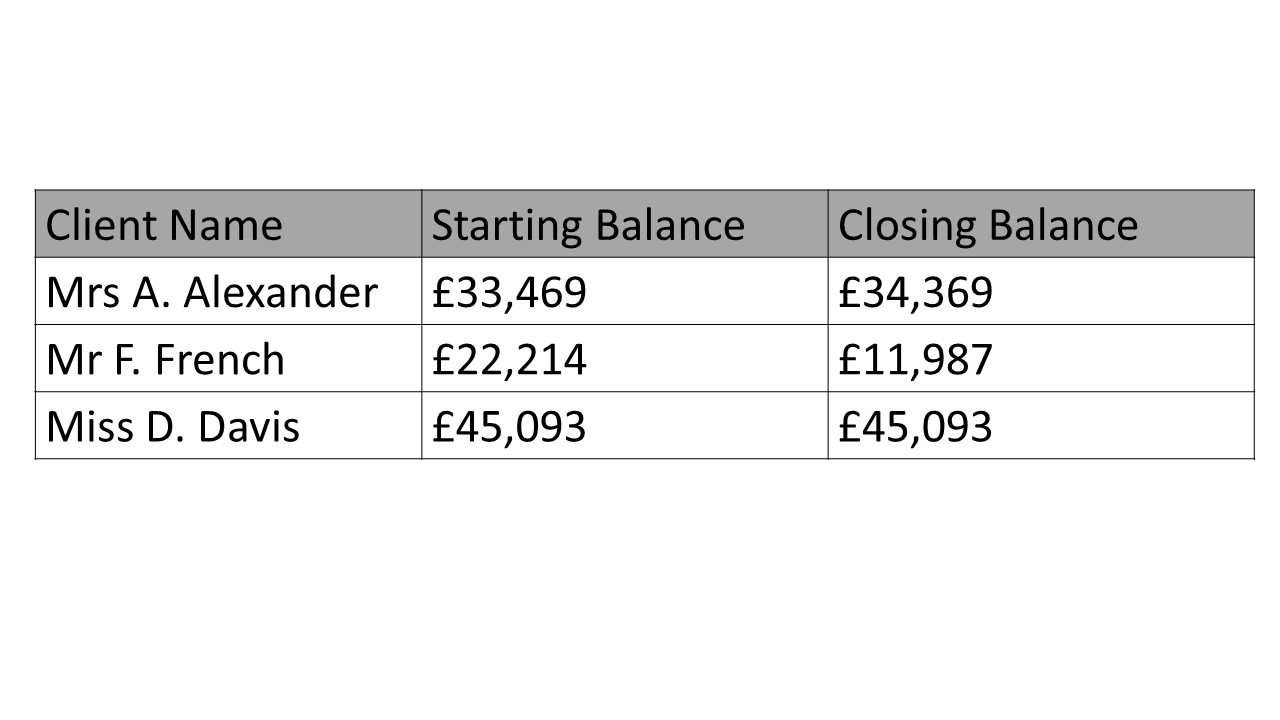
According to the table above, which customer spent the most money?
a) Mrs Alexander
b) Mr French
c) Miss Davis
d) None of the above
Verbal Aptitude
In the verbal aptitude assessment, you are being tested on your verbal reasoning; in other words, your ability to quickly read, understand and analyze information presented as a paragraph of text.
You will have 24 minutes.
The answer to the question will be provided in the text, so there is no need for previous knowledge or experience to be used in order to find the correct answer out of the multiple-choice options.
You need to decide if the question, presented as a statement, is true, false or cannot say.
The new regulations in consumer banking mean that from the specified date, customers will no longer be able to make withdrawals from their current accounts at the in-branch counters. All withdrawals must be made from the cash machines outside.
There is no change to the procedure for withdrawals from savings accounts and ISAs, and in-branch service will continue for deposits of cheques, coins, and large sums of cash.
Is the below statement true, false or is there not enough information to say?
The bank is no longer accepting any withdrawal requests at the counter in the branch.
a) True
b) False
c) Cannot Say
Diagrammatic Aptitude
Diagrammatic aptitude is an assessment of your ability to correctly follow the information flow of a diagram.
To answer the question, you will need to identify how different operators will change the result of a process. Some of the questions are likely to include fault finding, using the operators to decide why a certain result is not happening.
The questions are presented as a diagram, with an input, a process and an output along with a reference key.
The possible answers are presented in multiple-choice as with other assessments, and you have 24 minutes in this test.
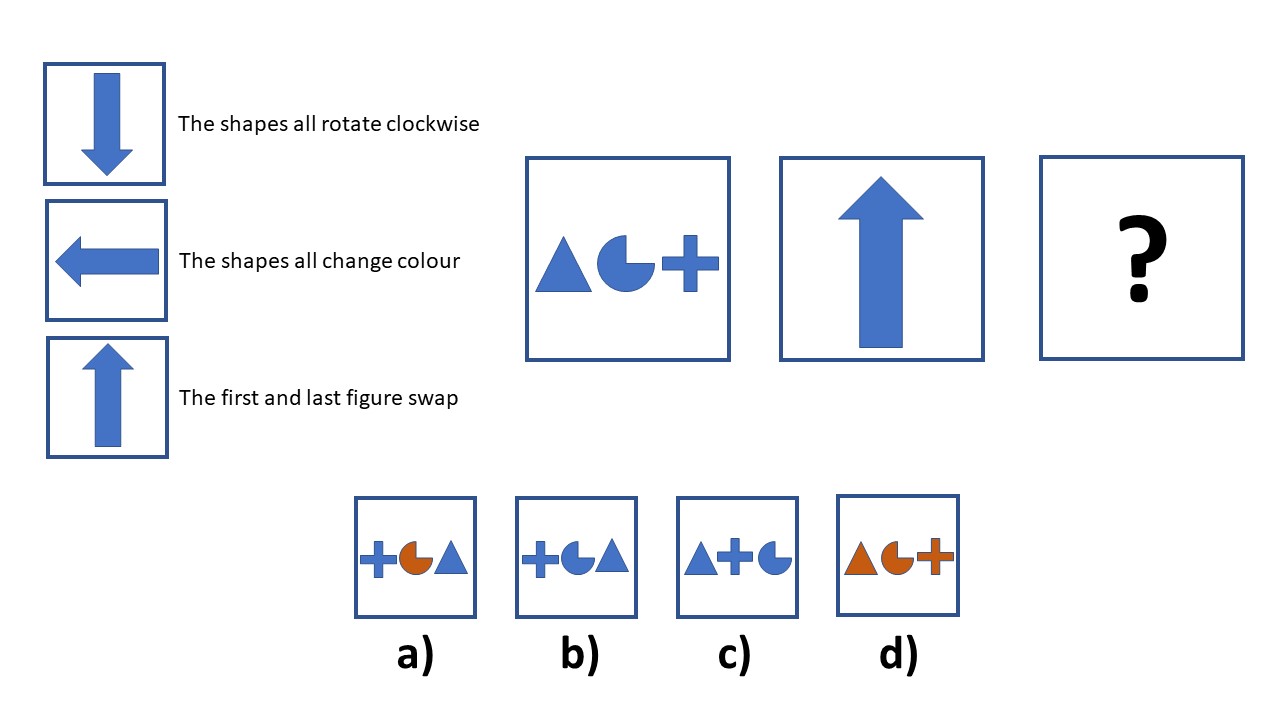
Abstract Aptitude
Abstract aptitude is about identifying the relationships between a series of images in a sequence.
For each question, you will be presented with a pattern, and there will be an image missing.
From the multiple-choice answers, you need to choose the right one to fill the gap.
This assessment has a 16-minute time limit.
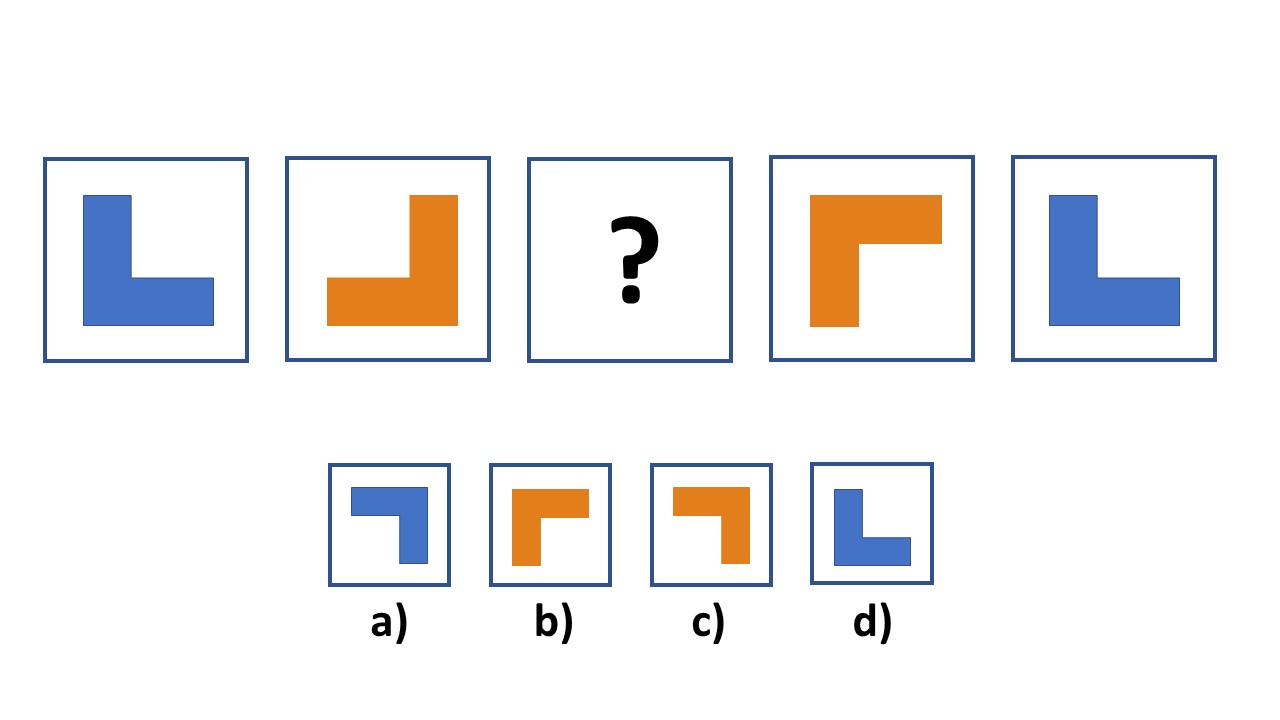
Error Checking
For roles where speed and accuracy are necessary, an error checking aptitude test is used to ensure that you can quickly identify errors in similar information.
This test is shorter at just 16-minutes, and you will be presented with two seemingly identical lists of information relating to the role that you have applied for.
These might be part numbers, telephone numbers or codes.
The errors will be found in the transposed list of information.
How many errors are in the transposed list?
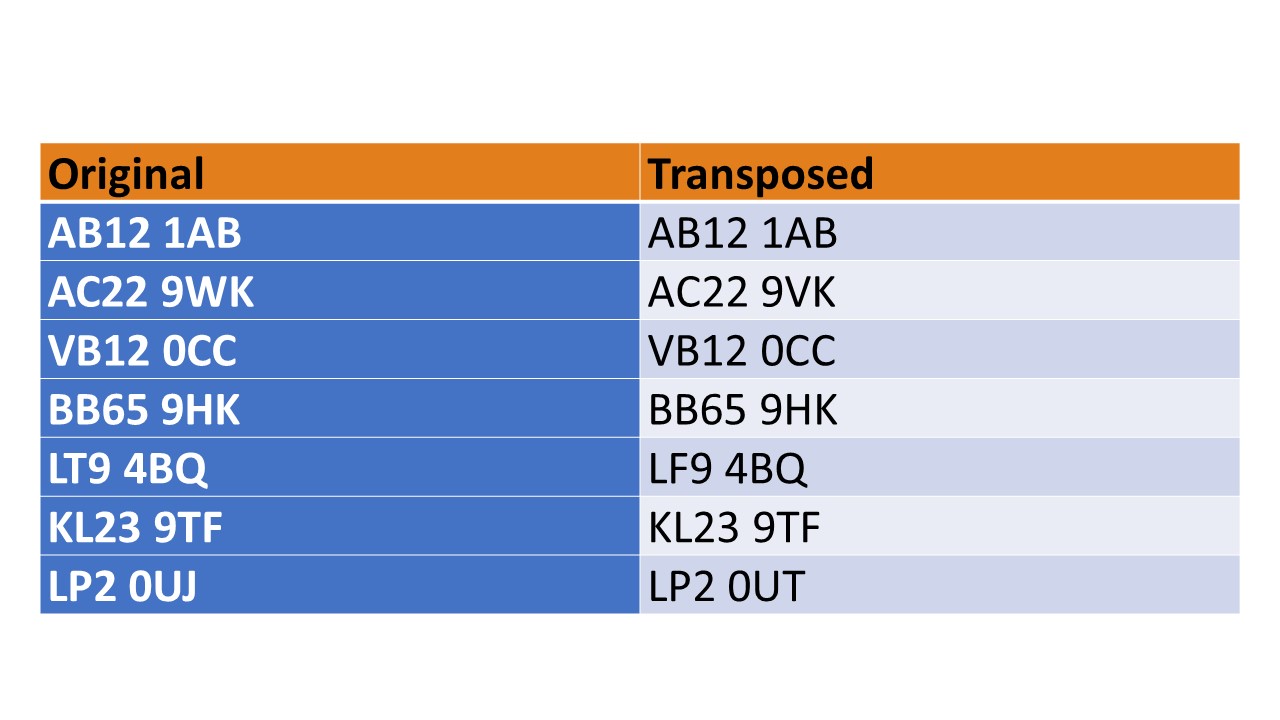
If you need to prepare for a number of different employment tests and want to outsmart the competition, choose a Premium Membership from TestHQ.
You will get access to three PrepPacks of your choice, from a database that covers all the major test providers and employers and tailored profession packs.
Mechanical Aptitude
Mechanical Aptitude is your ability to understand basic physics concepts like movement, direction and force.
Each question is based on illustrations and diagrams using pulleys, levers, wheels and gears and the answers are multiple-choice.
This assessment has a 16-minute time limit and is based on secondary school-level physics knowledge.
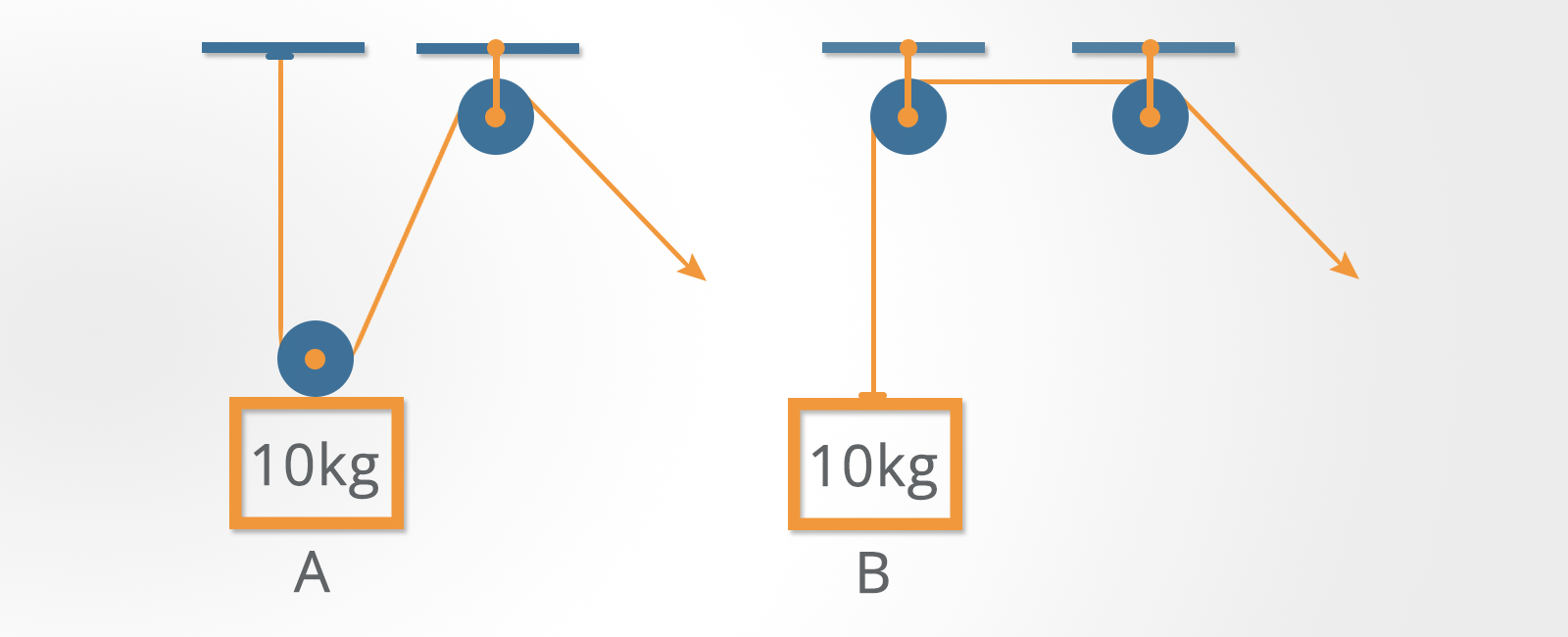
Which weight requires the least force to move?
a) A
b) B
c) Both require the same force
Spatial Aptitude
The manipulation of shapes through space and being able to picture the way they move is what the spatial aptitude assessment is looking for.
Each question presents four shapes, and you need to decide which is the odd one out.
The difficulty can be that the shapes are presented from different angles, so it isn’t always simple to choose the one that doesn’t fit.
This assessment is only eight minutes long, so decisions need to be made quickly.
Which is the odd one out?
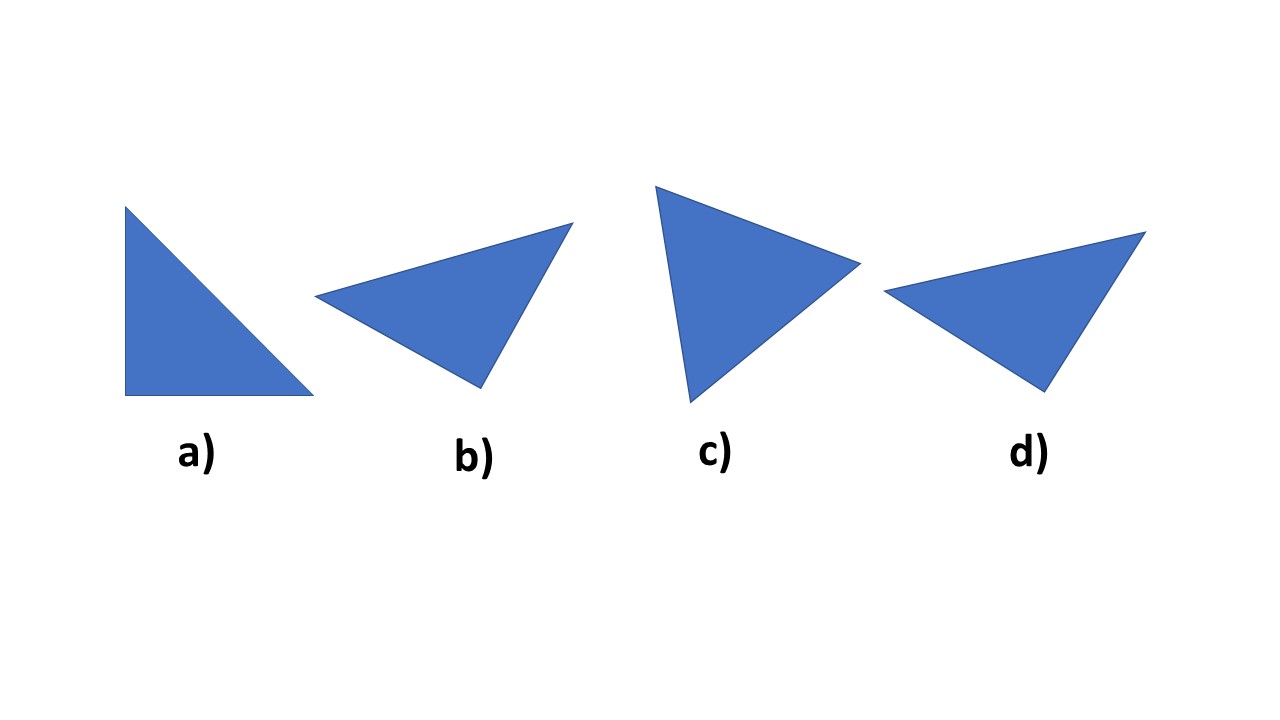

Saville Assessment Situational Judgement Tests
In a Saville Assessment situational judgment test, the recruiters are looking at your work behavior and how you solve problems. This is a good way to test how you will fit into the workplace culture.
Each question is a scenario that is related to the job role, realistic situations that are also hypothetical.
Following each scenario is a suggested course of action, and you need to rate it depending on how effective you think it is in dealing with the problem.
The length of the situational judgment test will depend on the company that is hiring.
Still, you will have less than 30 minutes to demonstrate that you have a good grasp of workplace norms and can confidently make decisions and respond well to challenging situations.
You have just moved into a new department at work, and one of your colleagues has been tasked to help you understand a new ordering system that you are not confident in.
The colleague has a lot of work of their own to complete and cannot give you enough help for you to feel confident using the system, and when you have asked them a question, they have snapped at you that they do not have time.
You go to your line manager and tell them that the colleague is refusing to train you.
On a scale of one to five, with one being very effective and five being not at all effective, how would you rate this response?
Workplace English
In some roles, an assessment of your ability to use basic workplace English might be necessary.
This short assessment is just 16.5 minutes long, and in it, you are tasked with finding the right word out of the multiple-choice possibilities that complete a sentence.
The sentences in the assessment are all related to the job role you will be completing, and a good knowledge of the English language will make them simpler.
All employees must ______ their hands before returning to work.
Select the correct word from below:
a) Hold
b) Wash
c) Eat
d) Stop
Wave Strengths
The Wave Strengths is a questionnaire that takes about 20-minutes to complete and focuses on your talents in workplace situations.
This assessment produces a report that a recruiter can use to place an employee in a role that most suits their workplace behaviors.
The questions are presented as a block of six statements, which you need to rate on a nine-point scale from ‘Very Strongly Disagree’ through to ‘Very Strongly Agree'.
If you mark two of these with the same rating, you will be presented with them again and asked to choose which one is most like you and which one is least like you.
These questionnaires that measure personality traits can be difficult for some people because they require a level of introspection that can be uncomfortable for many people.
a) I like to be in charge
b) People do not listen to my ideas
c) I like to know that I am doing a good job
d) I like to be the center of attention
e) I prefer to work in silence
f) I have a great sense of what is right
Saville Assessment Wave Focus Styles
In a similar way to the Wave Strengths questionnaire, the Saville Assessment Wave Focus Styles is a self-reporting assessment where you are presented with statements designed to ascertain your working preferences, motivations and needs in the workplace for you to be successful.
This is an untimed assessment, and it usually takes less than 15-minutes to complete.
There will be blocks of six statements that you will have to rate, and if you rate two the same, you will have to choose which one is most like you and which one is less like you.
Saville Assessment Wave Professional Styles Questionnaire
The Saville Assessment Wave Professional Styles questionnaire is a longer version of the Focus questionnaire, with more questions, so it takes longer.
It is regarded as being a more thorough assessment, taking up to 40 minutes to complete, and is usually used in the recruitment process for high-level management and professional roles in an organization.
The structure and layout of the assessment are the same as the Work Strengths and Focus Styles questionnaire.
Saville Assessments claims that this is their most powerful and valid personality questionnaire and is a good predictor of success in a role, so it is a popular option in many pre-employment screening test combinations.
Saville Assessment Tips
Here are some general tips to consider when taking the Saville Assessment:
- Familiarize yourself with the assessment: Take the time to understand the format, structure, and purpose of the Saville Assessment. This will help you feel more comfortable and confident during the test.
- Practice beforehand: Seek out sample questions or practice tests that are similar to the Saville Assessment. This will allow you to become familiar with the types of questions you may encounter and help you develop strategies for answering them effectively.
- Read instructions carefully: Pay close attention to the instructions provided for each section or question. Understanding what is expected of you will help you approach the assessment more accurately.
- Manage your time: The Saville Assessment is often timed, so it's essential to manage your time wisely. Allocate enough time to each question or section, and if you get stuck on a particular item, consider moving on and returning to it later if time allows.
- Be honest and authentic: The Saville Assessment is designed to evaluate your abilities, personality traits, or skills accurately. Answer the questions honestly and truthfully, rather than trying to provide socially desirable responses. Being authentic will ensure that the assessment results reflect your true characteristics.
- Stay focused and avoid distractions: Find a quiet and comfortable environment to take the assessment. Minimize distractions such as noise, interruptions, or external stimuli that may interfere with your concentration and performance.
- Practice self-care: Prioritize self-care before the assessment to optimize your cognitive abilities. Get enough rest, eat a balanced meal, and engage in activities that help you relax and reduce stress.
- Seek clarification if needed: If you come across any ambiguous questions or require clarification during the assessment, don't hesitate to reach out to the test administrator or follow the specified process for seeking assistance.
Remember, these tips are general guidelines, and it's essential to consider any specific instructions or guidelines provided by the organization administering the Saville Assessment.
How to Prepare for the Saville Assessments in 2025
Step 1. Find Out Which Test Type You Will Be Taking
You will be told during the application process which Saville Assessments you will be taking, and some employers will have this information available on their careers website so you can get ahead of the game.
If you are unsure, you can ask the recruitment team what aptitude and personality assessments will be used.
Knowing what you will be facing will help you to practice efficiently before the assessment.
Step 2. Review Sample Questions on the Saville Website
The Saville Assessment website is a great place to prepare for the assessments you will be facing, with plenty of practice questions on each test type.
You can easily find Saville Assessment practice tests and Saville Assessment Tips.
There are also some handy tips there that you can use to boost your performance and achieve a higher score.
Step 3. Sitting Past Papers/Practice Tests
Practice makes perfect, and by sitting complete practice tests and treating them like the real thing, you can really get familiar with the assessments, so you feel more comfortable on the day.
There are many Saville Assessment free practice tests available to prepare you for the Saville aptitude assessments.
Set a timer, remove distractions, and turn off notifications while you practice, and use your results to focus on where you might need to improve.
Step 4. Do Not Neglect Sections You Find Difficult
From your practice, you should be able to see the sections that you struggle with – and although it might be tempting to ignore these and do the ‘easy’ ones, you must focus on all the sections equally.
Using free Saville assessment practice tests will help you with the Saville assessment aptitude test.
Improving your performance on the sections you struggle with will make a difference to your final score, and make sure that you are not spending too much time on one question and missing out on the points that are simpler to achieve.
Step 5. Learn the Format of the Questions
Familiarity with the question formats will make the actual assessment less daunting, so make sure that you are practicing on tests designed with the same layout and answering method when you are preparing.
As Peter Saville co-founded SHL, some of the assessments are similar in structure and layout to the Saville Assessments. Still, it is better to focus on practicing the most accurate tests.
Step 6. Practice Against the Clock
The content of all these aptitude and personality tests is not what makes it challenging – it is the usual exam nerves and the tight time limit.
To get the best possible score, you need to be able to work quickly and accurately – it is surprising how fast time can go when you are stuck on a question.
You can make this less of a challenge by practicing tests against the clock, so you know how long you should be spending on each question.
Step 7. Make Sure You Are Mentally and Physically Prepared
On the day you are taking the assessment, be as mentally and physically prepared as you can be.
This means ensuring that you have had enough sleep and are well-rested, and you choose the time of day where you are most alert to complete the test. This might be first thing in the morning or later on in the evening.
If you are taking the test at home, don’t forget the practicalities of finding a comfortable and quiet place to take the test, with a reliable internet connection.
Eat well, with good, nutritious meals and plenty of fluids to stay hydrated to give your brain the boost it needs to perform well.
Try and stay calm in the assessment – while it can be nerve-wracking to face an ‘exam,’ it is important that you can take your time answering the questions without too much anxiety.
Prepare for Saville Assessment Test with TestHQ
Thorough preparation is vital if you have been asked to complete a Saville assessment.
One of the best ways to prepare is to practice answering mock test questions. This will allow you to become familiar with the way the questions are structured and what to expect from the test.
You should also spend some time researching the job role you are working towards, as this will help you to identify the personality attributes and qualities needed to succeed.
When you are completing the assessment, think about how your unique personality makes you a good fit for the job vacancy and overall organization. Remember to tailor the answers that you give to ensure this is reflected in your test results.
A Saville assessment is an umbrella term for a group of psychometric assessments used by many highly regarded employers.
Saville assessments are primarily designed to help with screening applicants, but they can also be used as part of the career development process for existing staff.
Anyone being asked to complete a Saville assessment will be asked to access the test questions from home, using the Saville Assessment OASys platform.
You can use this platform to complete Saville assessment OASys platform practice tests.
These tests will help you find the right Saville assessment OASys platform answers.
The Saville assessment is used to recruit the very best. It is notorious for being difficult and frustrating to complete, with some applicants not understanding its relevance to their job role.
However, it is possible to crack it with the following tricks:
- Understand the purpose of the assessment – The Saville assessment recreates work-related tasks to test aptitudes, personality traits and work behaviors to ensure they have the required skills to succeed. So while not every test will directly reflect your role, it establishes a minimum expectancy.
- Learn the format by completing practice questions – Several websites offer free practice tests in the Saville assessment or similar. Complete as many as you can. You can also take tests from other providers. The more practice you have with personality and aptitude tests, the better.
- Research the company – Knowing about the company will help you understand what type of employee they are looking for. You should never tailor your answers to fit the company's expectations, especially if it means you are lying. But having that knowledge will help you understand the questions.
The Saville Swift Assessments are often used in combination, known as a blended assessment. They are designed to be much shorter than standalone assessments.
When used in combination, the entire duration of the assessment is less than 30 minutes, with each lasting between 90 seconds six minutes.
As standalone assessments, they can last between 6 and 24 minutes.
The companies that use the Savile assessment include Deloitte, Emirates Airline, Mercedes-Benz, Johnson & Johnson, Nestle, L'Oréal, PwC and Unilever.
Many candidates find the Saville assessment hard and difficult to answer because they don't clearly understand the role they applied for.
Completing practice pre-employment tests and researching the company will help you pass the assessment.
There are also no right or wrong answers to the questions. Employers will analyze your responses and assess if your personality makes you a good fit for the job role.
The best websites to help you prepare are Psychometric Success and TestHQ.
Personality assessments are not tests you can fail. There are no right or wrong answers.
Instead, the company will use your answers to assess your fit for the company.
Failing to progress to the next recruitment stage does not mean you failed the assessments. It simply means you are not the employee the company is looking for right now.
Yes, Saville assessments are timed. Depending on which tests you take, you will have 6 to 30 minutes to answer all the questions.
The Saville Wave Professional Styles is a personality questionnaire that assesses:
- Behavior
- Character traits
- Preferred work environment
It allows employers to get a deeper view of a candidate's motivations and responses.
The Wave Professional Style is the more detailed version. It takes 40 minutes to complete, and measures strengths, weaknesses and cultural fit by analyzing:
- Unique characteristics or facet ranges
- Motives and talents
- Manipulation and fake responses
The Wave Focus Styles is shorter, lasting only 13 minutes, but assesses the same personality features.
The Wave Professional Styles questionnaires are described by Saville Assessment as 'the most powerful predictors of workplace performance and potential'.
The Wave Professional Styles questionnaire takes around 40 minutes to complete. It is a popular choice for employers recruiting into high-level management professional job roles.
Candidates are faced with statements designed to find out their working preferences, drivers and workplace needs.
Many candidates find personality questionnaires such as the Saville assessment hard.
The questions can be difficult to answer if you do not have a clear understanding of the job role that you are applying for.
That said, there are no right or wrong answers to the questions. Employers will analyze your responses to ascertain whether your personality makes you a good fit for the job role you have applied for.
If your Saville assessment results indicate that you would be a good match for the job role you have applied for, the hiring manager will contact you to discuss the next steps.
This might mean you are invited to attend an in-person interview, video interview or assessment center.
If you have been asked to take a Saville assessment as part of your employer’s career development program, your manager will probably want to set up a time to discuss your results and future career progression plans with you.
The Saville assessment questionnaires are a popular choice for many employers.
If you apply for multiple job roles throughout your career, you will probably end up taking the Saville assessment more than once.
However, most employers will not allow you to retake the Saville assessment if you fail to achieve the expected score.
Following these points will help you pass the Saville Assessment tests:
Step 1. Find out which test type you will be taking
Step 2. Review sample questions on the Saville website
Step 3. Sitting past papers/practice tests
Step 4. Do not neglect sections you find difficult
Step 5. Learn the format of the questions
Step 6. Practice against the clock
Step 7. Make sure you are mentally and physically prepared
The Saville Assessment Oasys platform is an online assessment system developed by Saville Assessment.
It allows organizations to administer and manage psychometric assessments for recruitment and development purposes.
It offers a user-friendly interface for administrators and test-takers, with a wide range of assessments measuring cognitive abilities, personality traits and work-related behaviors.
The time it takes to receive Saville Assessment results can vary.
Generally, results are typically delivered within a few business days after completing the assessment.
However, the exact timeframe may depend on factors such as the specific assessment used and the agreement with the assessment provider.
It is recommended to check with the assessment provider or organization for the specific timeline regarding the delivery of Saville Assessment results.
Final Thoughts
There are a huge number of employers across a range of industries that use Saville Assessments. They can be challenging if you are unfamiliar with the content or the structure.
Give yourself the best chance by making sure that you practice efficiently and refresh your knowledge on the sections that you might find difficult.






